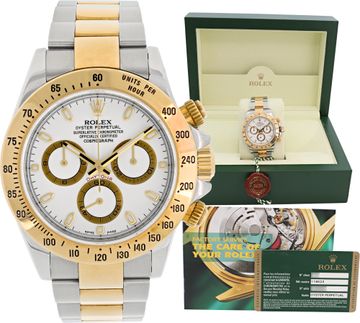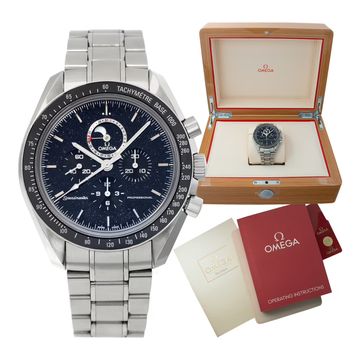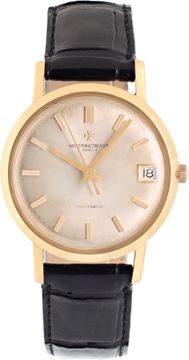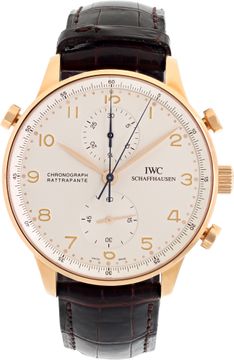The Evolution of Rolex Sports Models: From Tool Watches to Cultural Icons
The Evolution of Rolex Sports Models: From Tool Watches to Cultural Icons

In the rarefied world of luxury timepieces, few brands command the respect, recognition, and desire that Rolex does. While the Swiss manufacturer produces a variety of watch styles, it's their sports models that have transcended their utilitarian origins to become some of the most coveted objects in modern culture. These watches—originally designed as specialized tools for specific professions and activities—have evolved into status symbols and investment pieces whose value often appreciates over time. This remarkable transformation didn't happen overnight; it's the result of decades of innovation, marketing brilliance, and cultural shifts in how we perceive luxury.
The Birth of the Professional Watch (1950s)
The story of Rolex sports watches begins in earnest during the 1950s, a decade of unprecedented human achievement and exploration. As adventurers pushed the boundaries of what was possible—diving deeper, climbing higher, and traveling farther than ever before—they needed reliable instruments to accompany them.
In 1953, Rolex introduced the Submariner, a dive watch specifically designed for underwater exploration. With its rotating bezel for tracking dive time and robust waterproofing (initially to 100 meters), the Submariner represented a new category of timepiece: the professional dive watch. That same year, Sir Edmund Hillary and Tenzing Norgay conquered Mount Everest with a Rolex Oyster Perpetual on their wrists, cementing the brand's association with human achievement.
The Rolex Explorer was formalized in 1953 to commemorate this achievement, while the Rolex GMT-Master debuted in 1955, created in collaboration with Pan American Airways to help pilots track multiple time zones during transatlantic flights. The Milgauss followed in 1956, designed for scientists and engineers working in electromagnetic environments, with its distinctive ability to withstand magnetic fields up to 1,000 gauss.
Each of these early sports models shared a common philosophy: they were purpose-built tools designed to solve specific problems for professionals in demanding environments. Their aesthetic followed function—legible dials, robust cases, and practical complications directly tied to their intended use.

Refinement and Recognition (1960s-1970s)
Throughout the 1960s and 1970s, Rolex continued refining their professional models while introducing new ones. The Sea-Dweller arrived in 1967, pushing water resistance to new depths (610 meters) and adding a helium escape valve for saturation divers. The Explorer II followed in 1971, featuring a fixed 24-hour bezel to help cave explorers and polar expeditions distinguish between day and night.
Perhaps most significantly, 1963 saw the introduction of the Cosmograph Daytona, a chronograph designed for racing drivers. Initially slow to gain popularity, the Daytona would eventually become one of the most sought-after watches in the world—a transformation that perfectly illustrates the broader cultural shift occurring around Rolex sports watches.
During this period, these timepieces began appearing on the wrists of influential figures. Sean Connery wore a Rolex Submariner as James Bond, while Paul Newman's association with the Daytona (culminating in the famous "Paul Newman" dial variant) linked these watches to celebrity culture. What began as professional tools were becoming symbols of adventure, success, and sophistication.

The Quartz Crisis and Luxury Repositioning (1980s)
The 1970s and early 1980s brought the "quartz crisis"—an existential threat to the Swiss mechanical watch industry as inexpensive, more accurate quartz watches from Japan flooded the market. Many traditional Swiss watchmakers faltered, but Rolex weathered the storm through a combination of quality, prestige, and strategic repositioning.
Rather than compete with quartz watches on price or accuracy, Rolex leaned into the heritage, craftsmanship, and status their timepieces represented. Their sports models—once valued primarily for their functionality—were increasingly marketed as luxury items that conveyed achievement and discernment.
This period saw the introduction of the first Submariner in precious metals (gold and later two-tone steel and gold), signaling a significant philosophical shift. These were no longer just tools for professionals; they were status symbols that happened to be exceptionally well-made. The Sea-Dweller and GMT-Master lines similarly expanded to include more luxurious materials and finishes.
Cultural Icons and Investment Pieces (1990s-2000s)
By the 1990s, Rolex watches had completed their transformation from specialized tools to cultural icons. The resurgence of interest in mechanical watches positioned them as anachronistic luxuries—symbols of tradition and craftsmanship in an increasingly digital world.
The introduction of the Yacht-Master in 1992 reflected this evolution. While nominally a professional watch for sailors, its precious metal construction and more refined aesthetic clearly positioned it as a luxury item first. The Deepsea followed in 2008, pushing water resistance to an almost absurd 3,900 meters—far beyond practical human diving limits—representing technological prowess as much as practical application.
During this period, vintage Rolex sports models began appreciating significantly in value, creating a secondary market and collector culture that further enhanced their desirability. Limited production numbers, especially of certain reference numbers or dial variants, led to scarcity that drove prices ever higher.

Modern Rolex Era: Scarcity and Hype (2010s-Present)
The modern Rolex watch story can be defined by unprecedented demand and carefully managed scarcity. Waiting lists for models like the stainless steel Daytona, Submariner, and GMT-Master II stretch for years at authorized dealers, with retail prices often representing a fraction of their immediate market value.
Rolex has continued to innovate, introducing their own ceramic "Cerachrom" bezels, new movements with improved accuracy and power reserve, and subtle design evolutions that acknowledge heritage while embracing modernity. The Sky-Dweller, introduced in 2012, represented the brand's most complicated watch in production, combining an annual calendar with dual time zones.
The cultural cachet of Rolex sports models has never been higher. They appear prominently in music, film, and social media, coveted by celebrities and influencers alike. What began as specialized tools for professionals have become potent symbols of success, taste, and discernment—objects that tell a story about their owners while connecting them to a legacy of exploration and achievement.
Conclusion
The evolution of Rolex sports watches from professional tools to cultural icons represents more than just the success of a luxury brand. It illustrates changing attitudes toward luxury, craftsmanship, and status symbols over the past seven decades. These timepieces have transcended their original utilitarian purpose to become something more significant: physical embodiments of heritage, achievement, and enduring value.
For collectors and enthusiasts, the appeal lies not just in the watches themselves, but in their rich history and the stories they tell. From the summit of Everest to the depths of the Mariana Trench, from racing circuits to the film screen, Rolex sports models have been silent witnesses to human achievement and adventure.
In an age of planned obsolescence and disposable technology, these mechanical marvels represent something increasingly rare: objects designed to last lifetimes, improving with age and patina rather than becoming outdated. Their journey from tool watches to cultural icons reflects not just brilliant marketing, but a genuine appreciation for objects that combine purpose, craft, and heritage in equal measure.
Your Journey to Rolex Sports Excellence
At Gray and Sons Jewelers, we specialize in curating exceptional Rolex sports models that represent the pinnacle of Swiss watchmaking heritage. Our collection spans the legendary models that defined horological history - from early Submariners and GMT-Masters to the coveted Daytona and elegant Explorer lines. Each piece in our collection undergoes rigorous authentication and restoration by our master watchmakers, ensuring both mechanical precision and historical integrity.
Our expertise extends beyond sales to comprehensive rolex watch repairs. Our specialist watchmakers understand the unique characteristics of Rolex calibers. We utilize period-correct parts and techniques while incorporating modern maintenance standards to preserve these historical timepieces for future generations. Our restoration services can breathe new life into aged dials, cases, and bracelets while maintaining the desirable patina that collectors value.
For collectors looking to evolve their Rolex collection, our trade-in program offers exceptional flexibility. We provide detailed evaluations based on movement condition, rarity, and historical significance, ensuring fair market value for your timepiece. Whether you're looking to upgrade or just sell your Rolex watch, our experts will guide you through each step of the process. At Gray and Sons Jewelers, we're committed to being your trusted partner in Rolex collecting, offering the expertise and service these remarkable timepieces deserve.
Understanding Watch Movements: Manual, Automatic, and Quartz Explained
NEXT ARTICLE
Reviving Family Heirlooms: Your Spring 2025 Guide to Heirloom Jewelry Restoration






